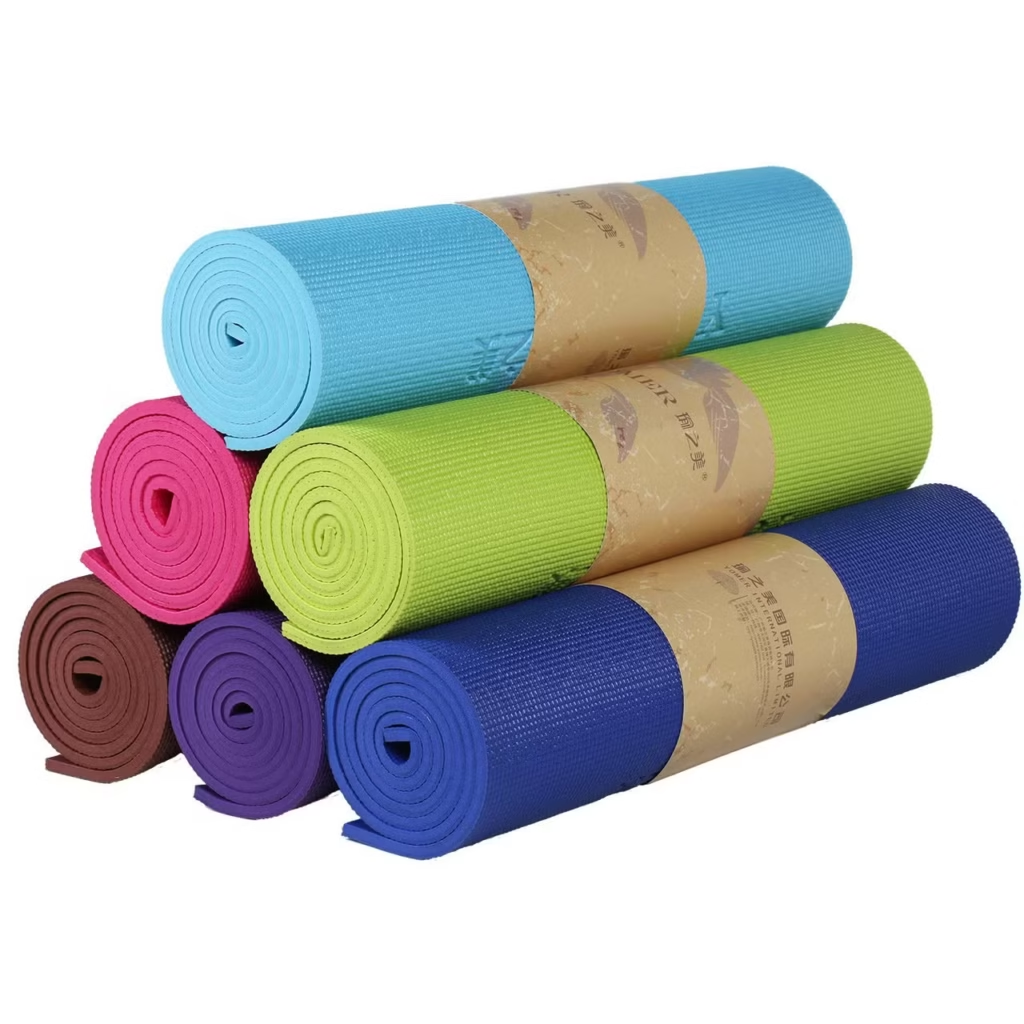Yoga Mat Environmentally Friendly 2025: A Comprehensive Guide
In recent years, yoga has seen a remarkable rise in popularity, with practitioners around the world embracing the practice for both its physical and mental benefits. As more people turn to yoga for a holistic lifestyle, the demand for eco-friendly yoga mats has skyrocketed. In 2025, the yoga mat industry is undergoing a significant transformation, as manufacturers shift their focus to sustainability and environmental responsibility. In this article, we will teach you about yoga mat environmentally friendly 2025.
The Evolution of Yoga Mats
Historically, yoga mats were primarily made from PVC (polyvinyl chloride), a material that, while durable and inexpensive, poses significant environmental challenges. PVC mats are not biodegradable and release harmful chemicals during production and disposal. With increasing awareness about environmental issues, the yoga mat industry has seen a push towards more sustainable alternatives. By 2025, eco-conscious consumers are now demanding products that align with their values of environmental preservation.
What Makes a Yoga Mat Eco-Friendly?
An eco-friendly yoga mat is one that minimizes environmental impact both during production and throughout its lifecycle. The main attributes of an eco-friendly yoga mat include:
- Material: The use of natural, renewable materials such as natural rubber, cork, jute, and organic cotton. These materials are biodegradable and do not release harmful toxins into the environment.
- Manufacturing Process: Sustainable production methods that reduce waste, water usage, and carbon emissions.
- Durability: Longer-lasting mats mean fewer mats need to be replaced, reducing waste.
- Recyclability: Some eco-friendly mats are designed to be recycled at the end of their life cycle, contributing to a circular economy.
Top Materials for Eco-Friendly Yoga Mats in 2025
- Natural Rubber: Natural rubber yoga mats are one of the most popular eco-friendly options. Sourced from the sap of rubber trees, these mats are non-toxic, biodegradable, and offer a strong, grippy surface. Natural rubber mats are free from PVC, phthalates, and other harmful chemicals found in conventional mats.
- Cork: Cork yoga mats are gaining popularity due to their durability and sustainable nature. Cork is harvested from the bark of cork oak trees without harming the tree, making it a renewable resource. Cork mats also offer a natural, antimicrobial surface, ideal for practitioners looking for a non-slip and hygienic experience.
- TPE (Thermoplastic Elastomer): TPE mats are a more recent innovation in the eco-friendly yoga mat market. Made from a blend of recyclable materials, TPE mats are lightweight, durable, and free of PVC, latex, and other toxic chemicals. They are also highly recyclable, making them a good choice for environmentally conscious yoga practitioners.
- Jute: Jute is another biodegradable material used for yoga mats. Known for its strength and durability, jute mats provide excellent traction and a natural, earthy feel. They are often combined with natural rubber for added cushioning and comfort.
- Organic Cotton: Organic cotton yoga mats are an excellent choice for those looking for a soft, comfortable, and eco-friendly mat. These mats are typically woven or quilted and are free from synthetic chemicals, making them safe for both the user and the planet.
Innovations in Eco-Friendly Yoga Mats for 2025
The yoga mat industry continues to evolve with innovative designs and materials. Some of the exciting advancements in eco-friendly mats for 2025 include:
- Recycled Materials: Many brands are now incorporating recycled plastics and materials into their mats. This helps divert waste from landfills and reduces the need for new raw materials.
- Non-Toxic Inks: Eco-friendly yoga mats are increasingly being produced with non-toxic dyes and inks, ensuring that no harmful chemicals are used in the printing or design process.
- Carbon Footprint Reduction: More manufacturers are adopting carbon-neutral production methods and offsetting emissions to reduce the overall environmental impact of yoga mat manufacturing.
The Benefits of Using Eco-Friendly Yoga Mats
- Healthier for You: Many traditional yoga mats contain harmful chemicals, including phthalates and VOCs (volatile organic compounds), which can affect your health. Eco-friendly mats are free from these toxins, making them a safer option for practitioners.
- Durable and Long-Lasting: Sustainable yoga mats tend to be more durable than their conventional counterparts, offering greater value over time.
- Supports Sustainability: By choosing an eco-friendly mat, you’re supporting the transition to more sustainable practices within the yoga industry and contributing to a healthier planet.
How to Choose the Right Eco-Friendly Yoga Mat
When choosing an eco-friendly yoga mat in 2025, there are several factors to consider:
- Material: Determine which material aligns with your values (e.g., natural rubber, cork, or jute) and offers the right level of grip and cushioning for your practice.
- Thickness: Yoga mats come in various thicknesses, typically ranging from 1/16 inch to 1/4 inch. Thicker mats provide more cushioning, while thinner mats offer a closer connection to the floor.
- Texture and Grip: Ensure the mat provides the appropriate level of grip for your practice. Some materials, such as cork and natural rubber, offer superior traction.
- Brand Transparency: Choose brands that provide transparency about their sustainability practices, from sourcing materials to manufacturing processes.
The Future of Eco-Friendly Yoga Mats
As more consumers demand sustainable products, the future of eco-friendly yoga mats looks promising. In 2025, the focus will continue to be on minimizing environmental impact, improving product longevity, and ensuring recyclability. Moreover, companies are likely to introduce even more innovative materials and production methods that further reduce waste and environmental harm.
Conclusion
The demand for environmentally friendly yoga mats is on the rise, and the year 2025 marks a significant shift toward more sustainable practices in the yoga industry. Eco-conscious consumers now have a wider variety of options to choose from, ensuring that their yoga practice is both beneficial for their body and aligned with their values of environmental responsibility. By investing in an eco-friendly yoga mat, you’re not only enhancing your practice but also contributing to a healthier planet.

